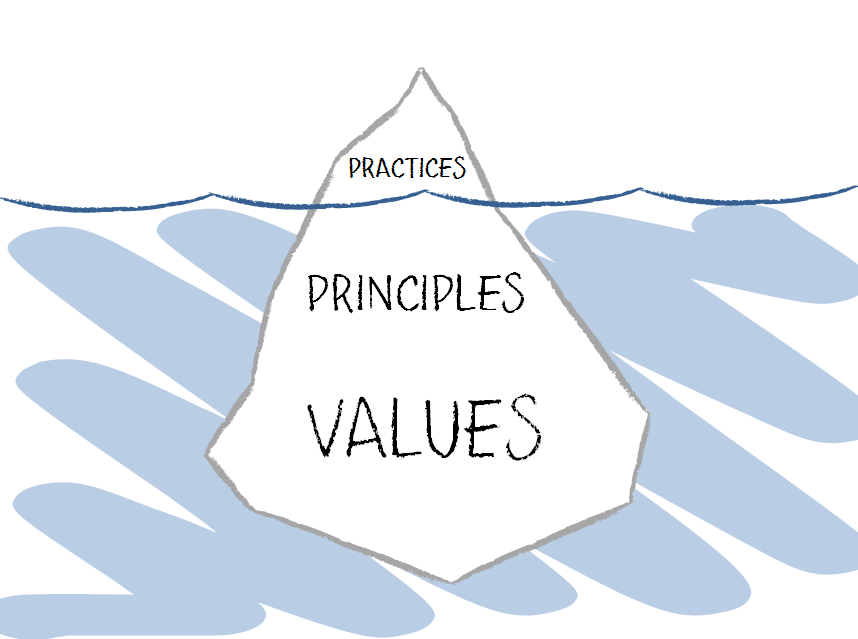I’m a strong proponent of participatory leadership model where everyone takes part in leading a team or even an organization. A part of leading is making decisions. After all if all decisions still have to be made, or at least approved, by a manager it isn’t much of participatory leadership.
(Benevolent) Dictatorship
The most typical starting point is that someone with power makes all decisions. As a result commonly seen hierarchies are just complicated structures of dictatorships. As a manager within my small kingdom I can do what I want as long as I don’t cross the line drawn by my overlord.
Of course there are managers who invite the whole team to share their input or even distribute particular decisions to team members. There are leaders who use their power for the good of their people. It may be benevolent dictatorship. It is still dictatorship though.
This model works fairly well as long as we have good leaders. Indecisiveness isn’t a super-common issue and if it is there’s at least one person who clearly is responsible. Often leaders have fair experience in their roles thus they are well-suited to make the calls they make.
The model isn’t ideal form a perspective of promoting participatory leadership. If we want more people to be more involved in leading a team or an organization we want them to make decisions. And I mean truly make decisions. Not as in “I propose to do this but I ask you, dear manager, to approve this so that responsibility is, in fact, on you.” I mean situations when team members make their calls and feel accountable for them.
I’d go even further and propose that in truly participatory leadership model team members acting as leaders would make calls that their managers wouldn’t.
This isn’t going to happen with a classic decision making process.
Consensus
A natural alternative is a consensus-driven decision making process. A situation where we look for a solution that everyone agrees on.
This one definitely allows escaping dictatorship model caveats. It doesn’t come for free though.
Looking for consensus doesn’t mean looking for the best option, but rather looking for the least controversial option. These two are very rarely synonymous. Another issue is the tiredness effect. After a long discussion people switch to “I don’t care anymore, let someone make that decision finally and move on.”
Not to mention that the whole decision making process suddenly gets really time-consuming for many people.
While in theory consensus solves accountability problem – everyone agreed to a decision – in practice the picture isn’t that rosy. If I didn’t take active part in the discussion or my objections were ignored I don’t feel like it’s my decision. Also if the decision was made by a group I will likely feel that responsibility is distributed and thus diluted.
One interesting flavor of consensus-driven decision making is when people really care about the decision even though it is controversial. It’s not that they want to avoid participation or even responsibility. It’s just consensus is unlikely, if even possible.
Such a discussion may turn into an unproductive shit storm, which doesn’t help in reaching any common solution and yet it is emotionally taxing.
Advisory Process
There is a very interesting middle ground.
My pursuit of participatory leadership decision making became a major obstacle. I declined to use my dictatorship power on many occasions encouraging people to make their own calls. The answer for a question starting with “Can I…” would simply be “Well, can you?” That worked up to some point.
It builds the right attitude, it helps to participate in leading and it makes people feel accountable. The problem starts when such a decision would affect many people. In such a case we tend to retreat back to one of the previous models: we either seek consensus or look for a dictator to make that call for us.
Not a particularly good choice.
I found the solution while looking at how no management companies deal with that challenge. Basically, everyone acts as they had dictatorship power (within constraints). However, before anyone makes their call they are obliged to consult with people who have expert knowledge on the subject as well as with those who will be affected by the
This is called advisory process. We look for an advice from those who can provide us valuable insight either because they know more about the subject or because their stakes are in play. Ultimately, a decision is made by a single person though. Interestingly enough, a decision-maker doesn’t have to take all the insight from advisory process into account. Sometimes it is not even possible.
Accountability is clearly there. Healthy level of discussion about the decisions is there as well.
Constraints
The key part of going with such decision making scheme is a clear definition of constraints. Basically, a dictator, whoever that is in a given context, gives up power for specific types of decisions.
The moment a team member makes a call that is vetoed the whole mechanism is pretty much rendered irrelevant. It suggests that people can make the decisions only as long as a manager likes them. This isn’t just a form of dictatorship but a malicious one.
These constraints may be defined in any sort of way, e.g. just a set of specific decisions or decisions that don’t incur cost beyond some limit, etc. Clarity is important as misunderstanding on that account can have exactly the same outcomes as ignoring the rules. After all if I believe I could have made a decision and it turns are not to be true I will be disappointed and disengaged. It doesn’t matter what exactly was the root cause.
Setting constraints is also a mechanism that allows smooth transition from benevolent dictatorship to a participatory model. One super difficult challenge is to learn that I, as a manager, lost control and some decisions will be made differently than I’d make them. It’s better to test how it works with safe to fail experiments before applying the new model to serious stuff.
It also addresses a potential threat of someone willing to exploit the system for their own gain.
Learning the ropes is surprisingly simple. It doesn’t force people to go too far out of their comfort zones and yet it builds a sense of leadership across the board. Finally it provides a nice option for transition from the old decision making scheme.
And the best thing of all – it is applicable on any level of organization. It can be at the very top of the company, which is what no management organizations do, but it can be done just within a team by its manager.






